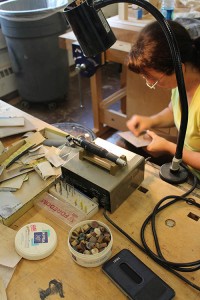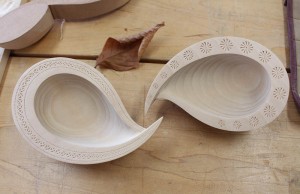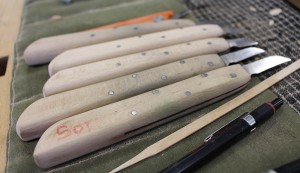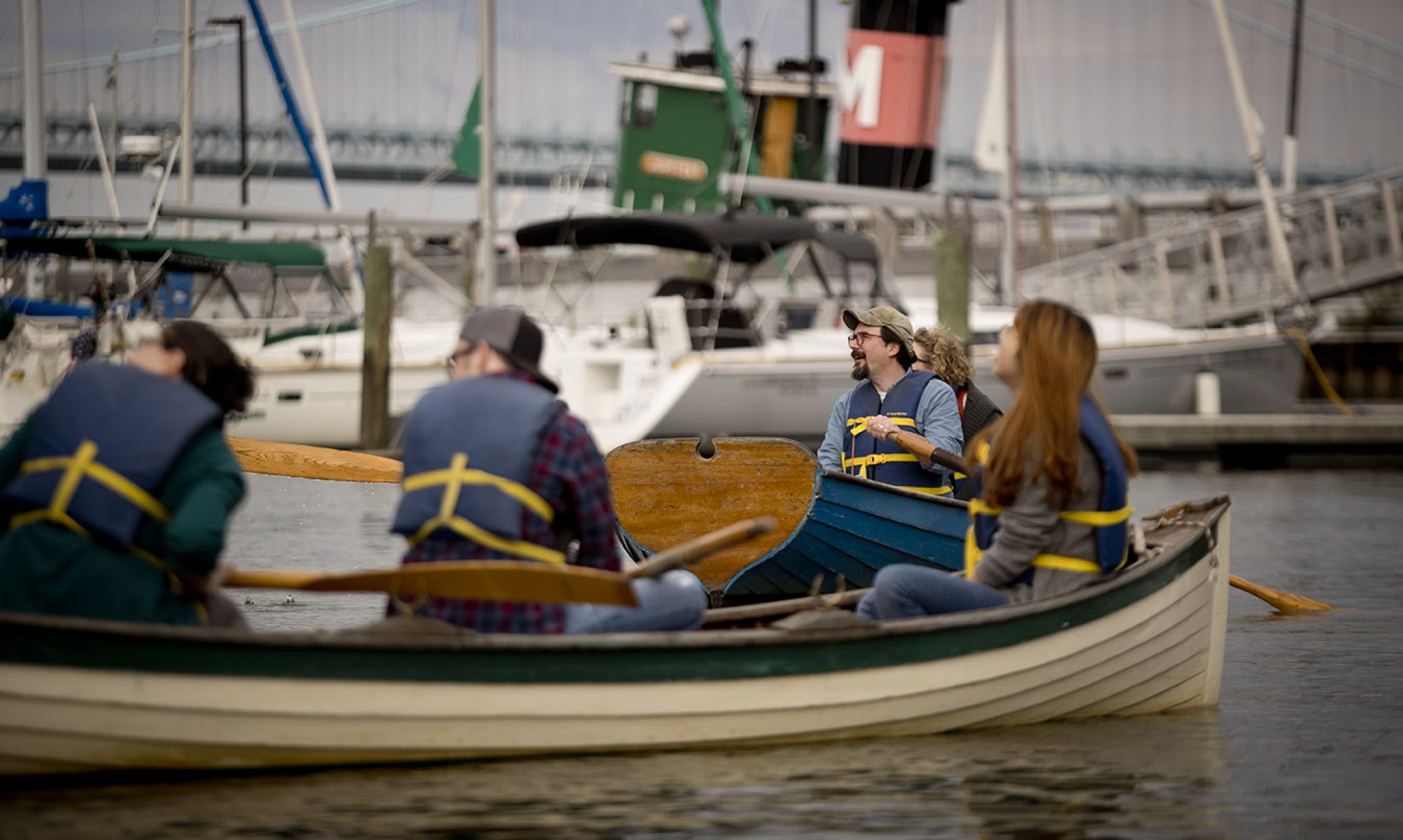 If we accept David Pye’s oft-stated claim that risk is an index of workmanship, then Zina Manesā-Burloiu easily ranks among the most accomplished of wood artists. The dazzling swirls of hand-chipped facets and micro perforations that characterize her work epitomize Pye’s notion that risk inheres in the abandonment of guides and other tools of standardization. And yet, Manesā-Burloiu has risked considerably more than imprecision on her path to becoming an internationally known wood artist. Coming up amid the twilight of Romanian Communism created unique opportunities for the artist, but also confronted her with considerable challenges. Through it all, Manesā-Burloiu has kept close her faith in destiny and a love for wood and tradition imparted by her family.
If we accept David Pye’s oft-stated claim that risk is an index of workmanship, then Zina Manesā-Burloiu easily ranks among the most accomplished of wood artists. The dazzling swirls of hand-chipped facets and micro perforations that characterize her work epitomize Pye’s notion that risk inheres in the abandonment of guides and other tools of standardization. And yet, Manesā-Burloiu has risked considerably more than imprecision on her path to becoming an internationally known wood artist. Coming up amid the twilight of Romanian Communism created unique opportunities for the artist, but also confronted her with considerable challenges. Through it all, Manesā-Burloiu has kept close her faith in destiny and a love for wood and tradition imparted by her family.
Manesā-Burloiu first encountered wood carving as a young girl in rural Romania, where she carved intricate geometrical patterns into the soft bark of tender walnut shoots. Though mere “play,” in her words, passing time this way amid the slow pace and scarcity of Communist-era village life honed her attention to detail. “Tradition,” she recalls,”was more important because of the way of life.” A traditional agrarian life, however, was not what Manesā-Burloiu wanted for herself. Mechanically inclined and with a talent for math, she left home at age thirteen to study engineering in the city. Manesā-Burloiu supported herself through high school and, later, university, by working mornings in a truck factory and studying by night. It was in the factory, in fact, where Manesā-Burloiu learned to make edged tools like the carving knives she uses today. It was one step toward a career she had not yet imagined.

[Click here to hear Manesā-Burloiu discuss her work.]
And then came 1989. Romania’s leaders succumbed that year to the wave of revolution that would topple Communism throughout much of the world. Manesā-Burloiu reached out to an uncle who had spent decades imprisoned by the old regime. He had mastered traditional Romanian wood carving techniques while in prison and, after the revolution, Manesā-Burloiu became fascinated by his work. “I fell in love with his house and his carving,” she recalls, “I wanted to do that too.” Her uncle chafed at first, resisting the notion that women should carve. But soon Manesā-Burloiu was helping him with his work and, in turn, learning her art from a master craftsman.
Manesā-Burloiu began showing her work—including spoons, cups, egg holders, and candle sticks—at Romanian craft fairs, though a corrupt jury system and relentless traditionalism frustrated her. ”I was almost at the point [of] giving up wood carving.” And then, in 1997, destiny intervened. Albert LeCoff had been searching for traditional Romanian wood turners and discovered Manesā-Burloiu’s uncle through an acquaintance. LeCoff invited him to visit the United States on behalf of the Center for Art in Wood, and to bring Manesā-Burloiu along as a translator. When the two arrived, however, LeCoff was surprised to discover that neither were actually wood turners. And yet, their work was so impressive, LeCoff sponsored their participation in a host of events. Before long, Manesā-Burloiu was in conversation with the nation’s leading wood artists, and developing a reputation of her own. “It was a mistake,” she says, “that changed my life.”

[Click here to hear Manesā-Burloiu discuss her method.]
It was not, however, a change without risk. In 2001, despite the vagaries of Romania’s fragile economy, Manesā-Burloiu left her factory job to pursue wood art full time. “Making a living from [wood carving] is my dream,” she says, “but when you live it, it is not so easy.” The market for wood art in Romania, for instance, forces Manesā-Burloiu to be more stylistically traditional than she’d like. Travel presents challenges too. Manesā-Burloiu had planned on being in residence at the Center during 2013, but was delayed for two years by a visa mishap. Now that she’s here, Manesā-Burloiu admits that “Philadelphia is the love of my life!” For her, the city is a place of inspiration and transformation. And the ITE residency, she explains, ensures both.
For more, see David Pye, “The Workmanship of Risk and the Workmanship of Certainty,” in The Nature and Art of Workmanship (Cambridge: Cambridge University Press, 1968).
